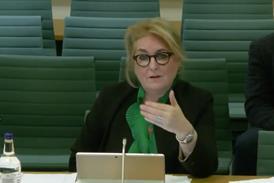It is very difficult to tell what an employer is actually like without talking to employees. For an aspiring lawyer, obtaining work experience, internships and vacation schemes can be so helpful. As an aspiring or qualified lawyer, you can find a company’s employees on LinkedIn and connect with some to get an idea. There are also other things you can look for to help get a feel, which I like to remember by thinking: ‘Front to Back and Top to Bottom’.

1. Front (client-facing)
Where a page directed at clients on the firm’s website says the organisation is part of a diversity directory and provides a link to that directory, does the link work or, to give one real-life example, do you get an error message saying that the directory has not existed since 2021? Do the premises have level access for wheelchairs (this is also a ‘Back’ consideration)? This week is Neurodiversity Celebration Week so is the firm talking about it on social media? Neurodivergence can so often be overlooked.
2. Back (employee-facing)
Is the firm’s talk of diversity directed at prospective employees as well as prospective clients? That is to say, on the firm’s careers page, does it give examples of reasonable adjustments provided to employees with disabilities? For training contracts, does the job application page for trainee solicitors assume that only young law students are applying or career changers? This is more easily researched on medium to larger organisations.
3. Top (senior people)
This is one that you might already be doing where particular characteristics are important to you. For example, are the senior lawyers – partners in law firms and general counsel at in-house legal departments – from diverse backgrounds?
4. Bottom (junior people)
What is the hierarchy like? Hierarchy in this case meaning whether non-lawyers and paralegals are treated differently to solicitors. Talking to employees is best but you also get a sense of it if non-lawyer staff have profiles on the firm’s website, although large firms tend not to do this. I would say this is a more effective way of getting a first impression of small to medium-sized firms. If the admin assistants have their own bios on the website, this is a promising sign of an employer that values all staff.
At the interview stage
As for how you would introduce at an interview questions about diversity and inclusion if it hasn’t already been brought up, my instinct is bluntness. Say: ‘This matters to me. Tell me what you do to make employees feel comfortable and protected to thrive in their role and do their best work.’
For neurodivergent and disabled candidates, it is important to bring up reasonable adjustments before an interview or at least draw the interviewer’s attention to what they should be mindful of in advance. After all, it will be easier for them to be aware of this at the outset rather than find they have to trawl through their memory halfway through or afterwards. It can be difficult to know how best to express this, so this draft may provide inspiration:
‘An interview is a highly stimulating (not in a good way) and pressurised situation for anyone, let alone an autistic person. Interviewers should be mindful that I can find the interview process more stressful than a neurotypical person and misinterpret or struggle to understand questions I find too vague. I will naturally seek clarity when I struggle with a question, so interviewers may receive such questions.
‘Similarly, hypothetical questions can be difficult if I am being asked to imagine a situation I have not been in and am not likely to be in anytime soon. For example, I will treat questions on where I see myself in however many years’ time as what I would like to happen up to a certain career stage, because it is hard for me to imagine it being appropriate to aim to become a partner without being in a sufficiently senior position where that is a possibility.
‘The tone of my voice and facial expressions seem prone to misinterpretation when I am not “masking” (performatively expressing emotion so that others can understand what emotion I am feeling) with others, because what I am thinking may not align with how I present and I may not realise how my interviewers view this. Likewise, I use eye contact to convey that I am listening or am otherwise engaged with the conversation; depending on how stressed I am, this will be something I will struggle with during the interview.’
Ultimately, make sure you disclose your disability ahead of any interview. Many employers are perfectly happy to make reasonable adjustments but are unfamiliar with the options. The Law Society’s reasonable adjustments guidance (tinyurl.com/5xvu6sdp) is helpful in this regard because it gives real-life examples of current practice in law firms both large and small.
Martin Whitehorn is projects and campaigns co-lead at the Legal Neurodiversity Network




























No comments yet